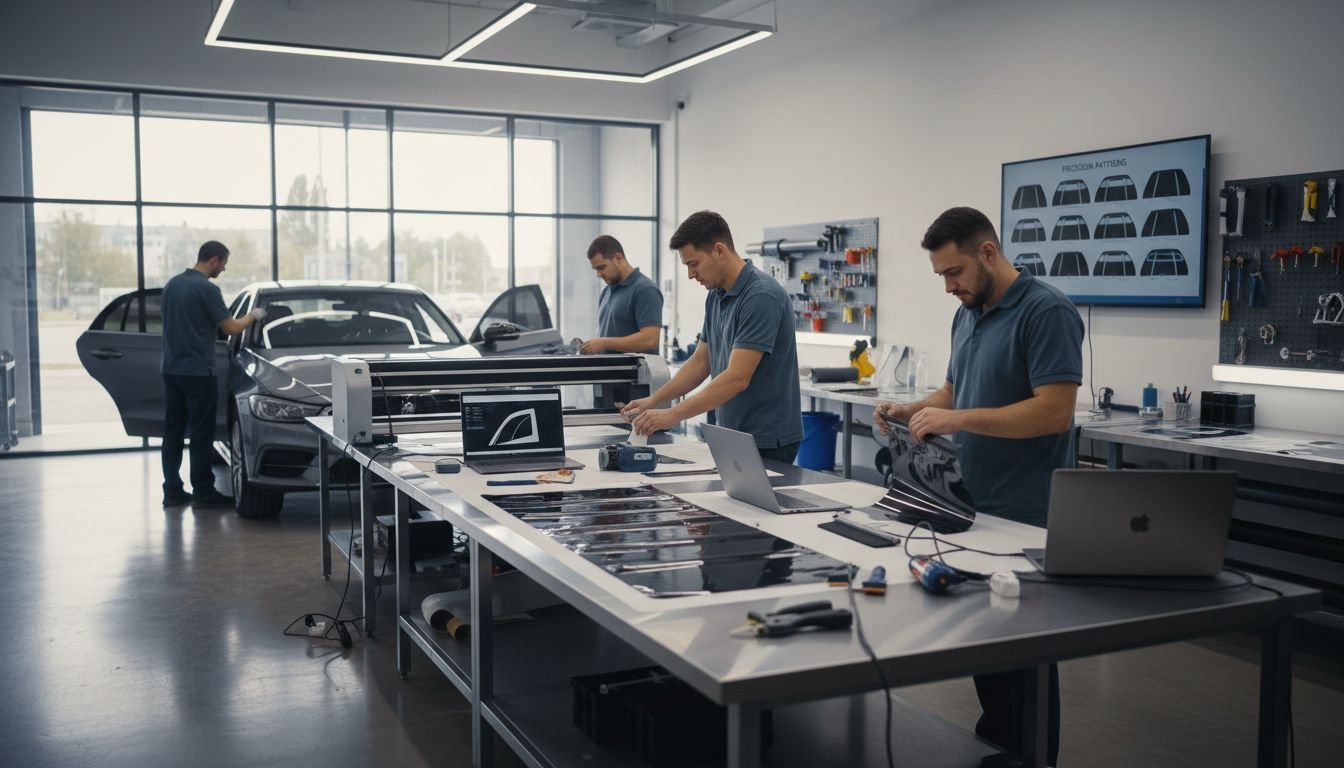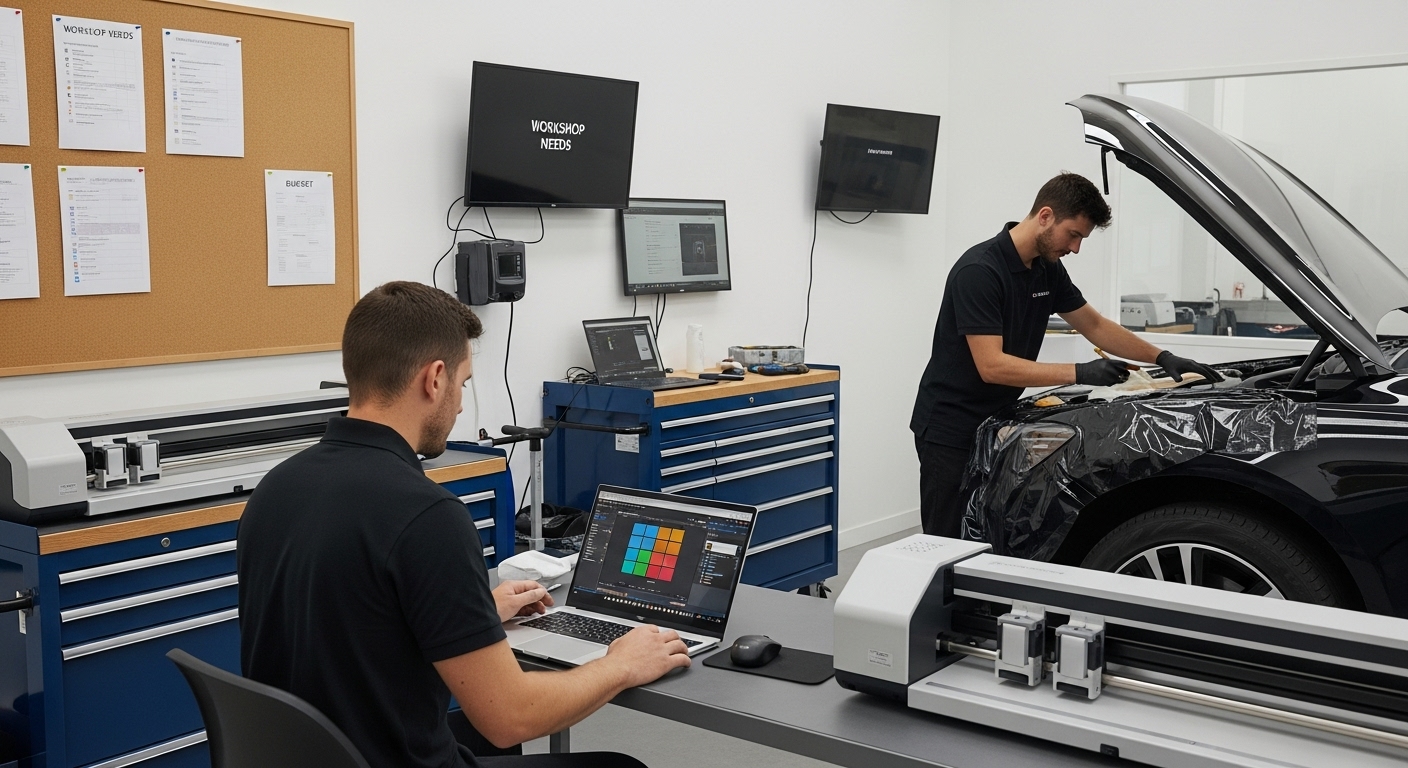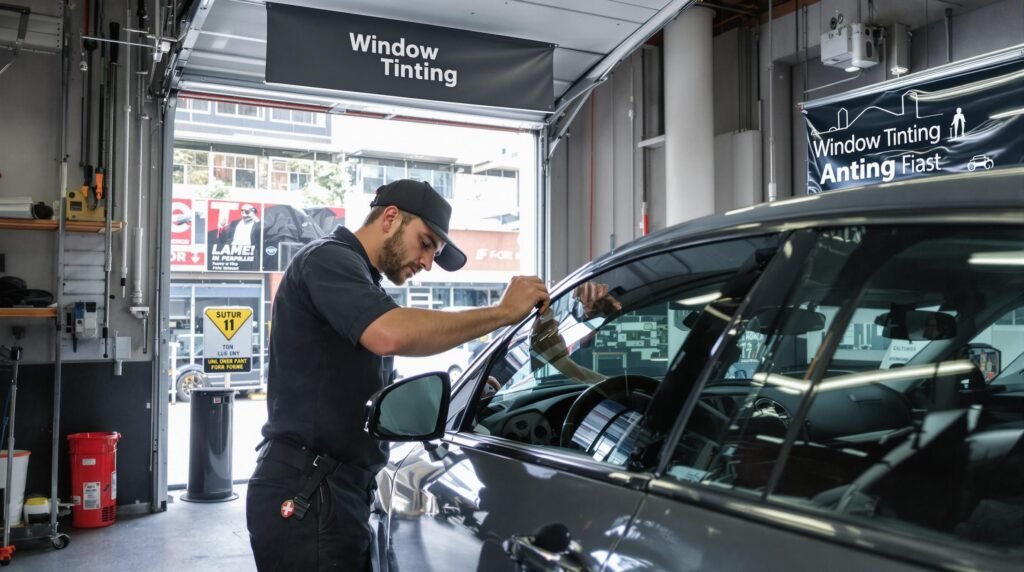

Window tint does far more than simply darken a car’s glass. Professional installers now work with precision materials like ceramic and nanocrystalline films that can block up to 99 percent of damaging ultraviolet rays. You might think all window tints work the same, just giving a sleek look. The reality is these advanced tints are engineered to cut glare, lower cabin heat, and even help businesses net up to 70 percent markups per job. Get ready for a closer look at how new tint technologies are changing the standards for automotive comfort and profit.
Table of Contents
- Understanding The Science Of Window Tint
- Layers And Materials Used In Window Film
- Key Benefits For Automotive Businesses
- Common Myths And Troubleshooting Tips
Quick Summary
| Takeaway | Explanation |
|---|---|
| Window tinting optimises light and heat management. | Tints strategically reflect and absorb light, enhancing vehicle comfort and visibility. |
| Advanced materials offer superior performance. | Modern films use ceramic and nano-engineered structures for better heat rejection and durability. |
| High-margin service potential in window tinting. | Tinting can provide automotive businesses with attractive profits, ranging from 50-70% markup. |
| Debunk window tint myths for customer trust. | Awareness of film diversity helps installers set proper expectations and avoid common misconceptions. |
| Pre-installation preparation is crucial for success. | Ensuring clean surfaces and optimal conditions mitigates installation issues like bubbling or peeling. |
Understanding the Science of Window Tint
Window tint represents a sophisticated technological solution that transforms how light and heat interact with vehicle glass. At its core, the science of window tinting involves complex optical and thermal engineering principles that go far beyond simple darkening of windows.
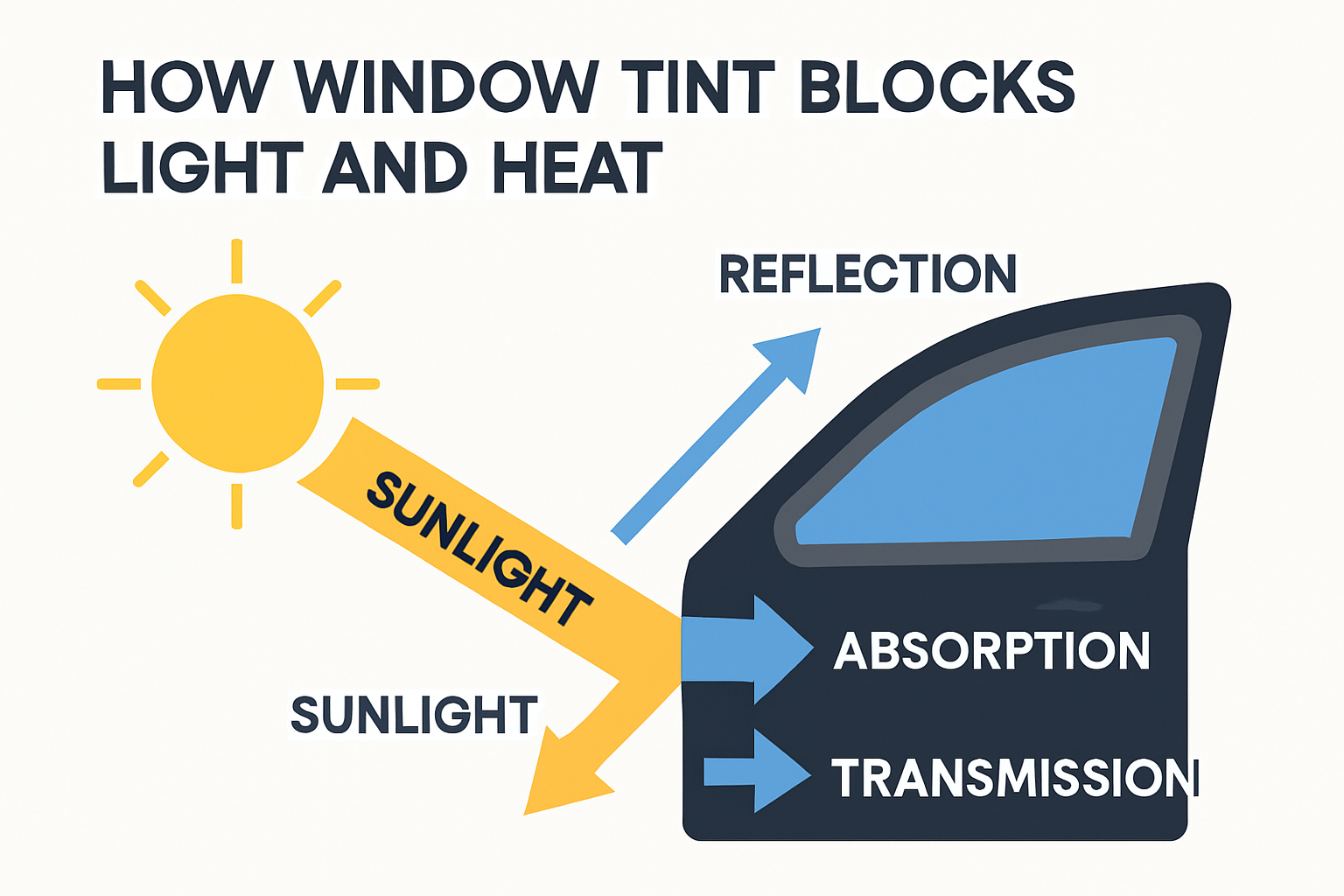
Optical Properties and Light Transmission
The fundamental mechanism of window tint revolves around precise manipulation of electromagnetic radiation. When sunlight strikes a tinted window, multiple interactions occur simultaneously. According to the Florida Solar Energy Center, reflective films typically constructed from metallic materials strategically reflect unwanted solar heat before it can be absorbed by the vehicle’s interior. This process involves three primary mechanisms: reflection, absorption, and transmission.
At a microscopic level, window tint materials are engineered with nanocrystalline structures that selectively filter different wavelengths of light. Research exploring light scattering in transparent materials reveals that the turbidity and optical properties depend on intricate relationships between wavevector of light and the average radius of crystalline structures embedded within the film.
Thermal Regulation Mechanisms
Beyond optical manipulation, window tints serve critical thermal regulation functions. The advanced materials used in professional-grade tints are designed to interrupt solar heat transfer through multiple strategies. Metallic and ceramic particles within the film act as thermal barriers, preventing infrared radiation from penetrating the glass.
Professional installers understand that effective window tinting is not merely about darkening glass but creating a sophisticated thermal shield. The tint’s molecular composition allows selective filtering – blocking harmful ultraviolet rays while permitting optimal visible light transmission. This precision engineering ensures drivers maintain clear visibility while experiencing reduced interior temperatures.
Interested professionals might want to explore more about different window tint technologies that are revolutionizing automotive glass protection. The ongoing innovations in this field continue to push boundaries of material science and thermal engineering, offering increasingly advanced solutions for vehicle owners seeking enhanced comfort and protection.
Layers and Materials Used in Window Film
Window film represents a sophisticated multilayered structure engineered to deliver precise performance characteristics for automotive professionals. The complex composition of these films goes far beyond simple visual aesthetics, involving intricate material science and strategic layering techniques.
Fundamental Film Components
According to the Whole Building Design Guide, window films comprise several critical layers that work synergistically to deliver optimal performance. The standard configuration typically includes a protective release liner, adhesive layer, polyester film base, metallized or ceramic coating, and a scratch-resistant outer surface.
The primary substrate material is polyethylene terephthalate (PET), selected for its exceptional optical clarity and structural integrity. Research from Wikipedia highlights that PET provides remarkable tensile strength and dimensional stability, making it ideal for automotive applications where consistent performance is paramount.
Below is a table summarising key components found in standard window film construction, helping clarify the function of each layer for automotive professionals.
| Layer | Main Material | Function/Description |
|---|---|---|
| Protective Release Liner | Specialised plastic | Protects adhesive until installation |
| Adhesive Layer | Pressure-sensitive adhesive | Bonds film securely to glass |
| Polyester Film Base (PET) | Polyethylene terephthalate | Provides structural integrity and optical clarity |
| Metallized/Ceramic Coating | Metal or ceramic particles | Controls light/heat transmission and reflection |
| Scratch-Resistant Outer Layer | Durable polymer | Shields film from abrasion and wear |
Advanced Material Configurations
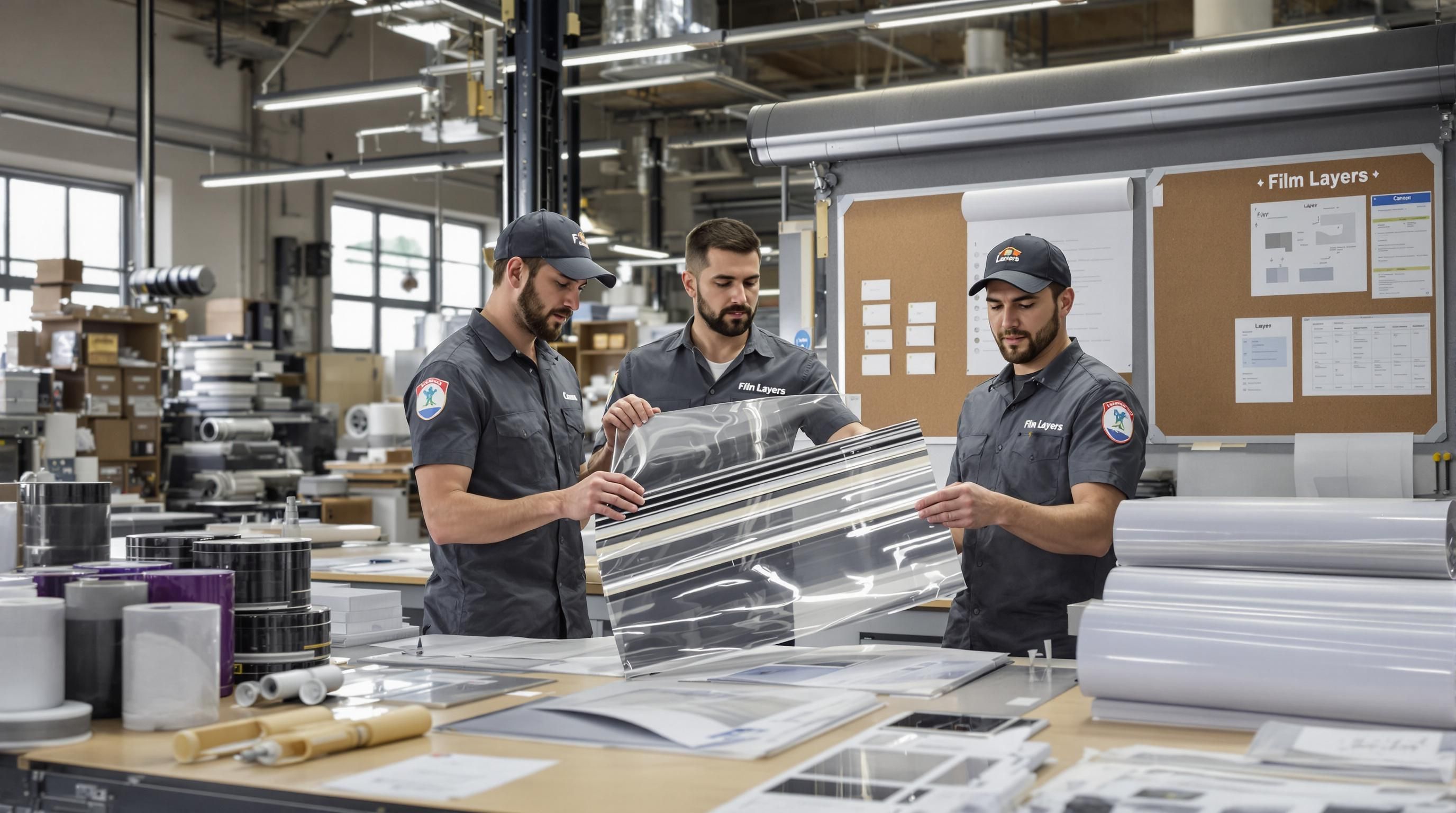
Modern window films have evolved beyond traditional dyed and metallized configurations. Professional installers now encounter sophisticated material types including ceramic, carbon, and nano-engineered films. A study published in Engineering and Technology Horizons evaluating thermal resistance reveals that these advanced materials offer increasingly nuanced performance characteristics.
Ceramic films, for instance, utilize non-metallic ceramic particles that provide superior heat rejection without interfering with electronic signals. Carbon films offer deep, uniform coloration and excellent heat reduction properties. Nano-engineered films represent the cutting edge, incorporating microscopic structures that can selectively filter specific wavelengths of electromagnetic radiation.
For easy reference, the following table compares the key features of popular advanced window film types, supporting professional installers in selecting the optimal material for each customer requirement.
| Film Type | Key Material | UV Rejection | Heat Rejection | Electronic Interference |
|---|---|---|---|---|
| Dyed | Coloured dye | Moderate | Low | None |
| Metallized | Metal particles | High | Moderate-High | Possible (may disrupt) |
| Carbon | Carbon particles | High | High | None |
| Ceramic | Ceramic microparticles | Up to 99% | Very High | None |
| Nano-Engineered | Nano structures | Very High | Exceptional | None |
Professionals interested in understanding the intricate world of window tint technologies will appreciate the continuous innovation driving material development. Each layer and material selection represents a carefully calculated approach to managing light transmission, thermal regulation, and vehicle aesthetics.
Key Benefits for Automotive Businesses
Window tinting represents more than an aesthetic enhancement for automotive businesses—it is a strategic service offering that delivers substantial value across multiple operational dimensions. Professional installers and automotive service providers can leverage window tinting as a powerful revenue stream and customer satisfaction tool.
Economic and Efficiency Advantages
Professional window tinting services provide significant economic benefits for automotive businesses. According to the U.S. Department of Energy, window treatments can dramatically reduce heat gain, translating into tangible cost savings for vehicle owners and service providers alike. This reduction in solar heat transmission means lower cooling demands, extended vehicle component lifespan, and improved overall energy efficiency.
Financially, window tinting represents a high-margin service with relatively low initial investment. Automotive businesses can differentiate themselves by offering premium tinting solutions that address multiple client needs—from aesthetic customization to functional protection. The markup potential for professional-grade window tinting services can range between 50-70%, making it an attractive additional revenue channel for detailing centers, auto shops, and mobile installation services.
Customer Value and Protection
Beyond economic considerations, window tinting delivers compelling value propositions for vehicle owners. Professional-grade films provide comprehensive protection against harmful ultraviolet radiation, which can cause interior upholstery degradation, dashboard cracking, and accelerated material aging. By offering advanced window tinting, automotive businesses position themselves as proactive guardians of vehicle longevity and customer investment.
Additionally, window tinting addresses multiple customer pain points simultaneously. Enhanced privacy, reduced glare, improved temperature regulation, and aesthetic customization represent multi-dimensional benefits that resonate with diverse client segments. Professional installers who can articulate these comprehensive advantages create stronger value propositions and customer loyalty.
For businesses seeking to optimize their service offerings, exploring advanced protection technologies can provide a competitive edge. The window tinting market continues to evolve, presenting ongoing opportunities for automotive professionals to differentiate their service portfolios and meet increasingly sophisticated customer expectations.
The strategic implementation of window tinting services requires precision, technical expertise, and an understanding of emerging material technologies. Automotive businesses that invest in continuous training, high-quality materials, and customer-centric approaches will be best positioned to capitalize on this dynamic market segment.
Common Myths and Troubleshooting Tips
Window tinting involves numerous misconceptions that can significantly impact professional installation and customer expectations. Understanding these myths and developing strategic troubleshooting approaches is crucial for automotive professionals seeking to deliver exceptional service.
Debunking Window Tint Misconceptions
Automotive detailing experts emphasize that not all window films are created equal. One prevalent myth suggests that all tints perform identically, which is fundamentally incorrect. Different film types—dyed, metallic, hybrid, and ceramic—offer distinct performance characteristics and functional advantages.
Another widespread misconception involves warranty concerns. Professional sources reveal that high-quality window films do not automatically void vehicle warranties. Modern films incorporate advanced adhesive technologies and abrasion-resistant coatings, ensuring long-term performance and compatibility with original manufacturer specifications.
Professional Troubleshooting Strategies
Successful window tint installation requires meticulous preparation and technical expertise. Common issues like bubbling, peeling, and improper adhesion can be mitigated through comprehensive pre-installation assessment and precise application techniques. Professionals must carefully evaluate surface conditions, ambient temperature, and film compatibility before commencing installation.
Key troubleshooting considerations include:
- Ensuring absolutely clean and contaminant-free glass surfaces
- Maintaining optimal ambient temperature during installation
- Using professional-grade tools and precision cutting techniques
- Selecting film materials compatible with specific vehicle glass types
Performance and Quality Considerations
Window film specialists recommend balancing multiple performance factors when selecting tint solutions. Professionals must consider infrared energy rejection, visible light transmission, heat reduction, aesthetic preferences, and budget constraints.
For automotive businesses, understanding these nuanced considerations is critical. Exploring advanced protection technologies can help professionals differentiate their services and provide comprehensive solutions that address multiple client needs.
Ultimately, dispelling myths and implementing rigorous quality control processes separates exceptional window tint professionals from average installers. Continuous education, investment in high-quality materials, and commitment to precision remain the cornerstone of successful automotive window tinting services.
Frequently Asked Questions
What is window tint?
Window tint is a thin film applied to vehicle glass that reduces glare, blocks harmful ultraviolet rays, and regulates heat within the cabin.
How does window tint work?
Window tint works by manipulating light through reflection, absorption, and transmission, effectively blocking harmful UV rays and reducing infrared radiation to enhance vehicle comfort.
What materials are used in window tinting films?
Modern window tint films are typically made from advanced materials such as ceramic, carbon, and nanocrystalline structures which provide superior durability and thermal performance compared to traditional films.
What are the benefits of professional window tinting for automotive businesses?
Professional window tinting can provide automotive businesses with high profit margins, enhance customer satisfaction through improved vehicle comfort and protection, and differentiate their services in a competitive market.
Transform Window Tint Installs Into Profitable Precision
Staying ahead in window tint technology means more than simply choosing the latest films. As detailed in this article, professional auto installers face ongoing pressures: demanding customers expect flawless results, rising material costs cut into margins and mistakes during hand-cutting can waste both time and product. You need a solution that bridges the gap between expert knowledge and real-world efficiency, all while keeping quality and accuracy at the forefront. Our Window Tint – AEONCUT PPF Pre-cut Cutting software page offers insights and tools specifically tailored for tint professionals who want to streamline their workflow and boost profits without compromising on standards.
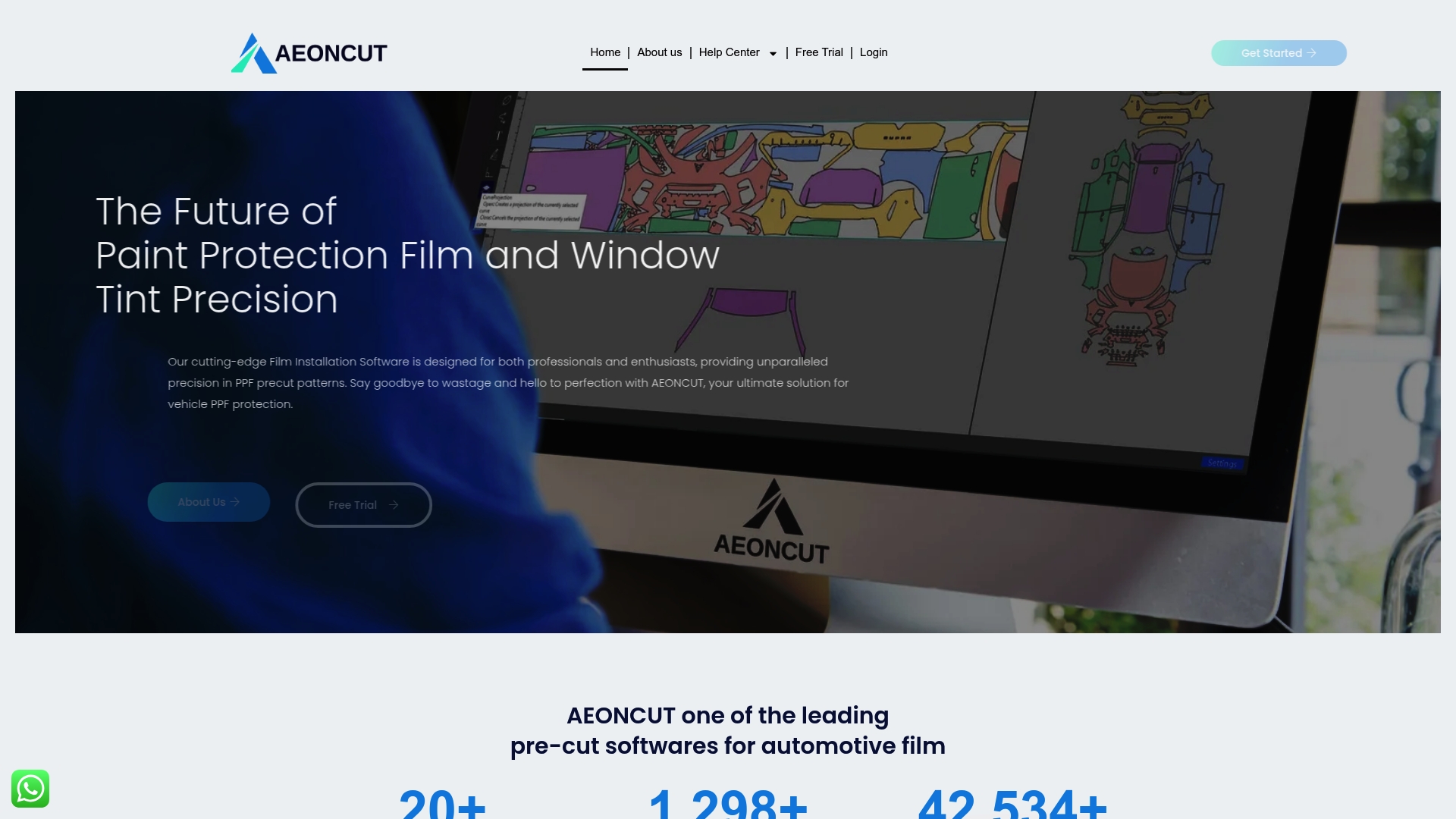
Ready to experience advanced pattern accuracy in every job? Harness the full power of AEONCUT’s cutting-edge software for pre-cut window tint solutions. Gain unlimited pattern access, AI-optimised material savings and continuous updates that keep you ahead of the competition. Do not let outdated methods hold your business back. Explore AEONCUT today and elevate your window tint service before your competitors do.
Recommended
- What is Window Tint? Essential Guide for Tinting Pros 2025 – AEONCUT PPF Pre-cut Cutting software
- Types of Window Tint: Guide for Installers and Dealers 2025 – AEONCUT PPF Pre-cut Cutting software
- 2025 Guide to Window Tint Colour Options for Industry Pros – AEONCUT PPF Pre-cut Cutting software
- Cost of Window Tinting: 2025 Guide for Installers – AEONCUT PPF Pre-cut Cutting software


